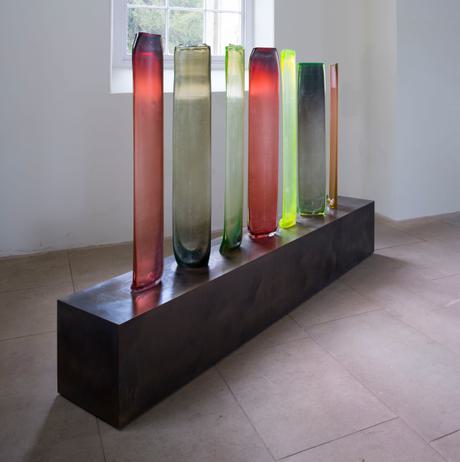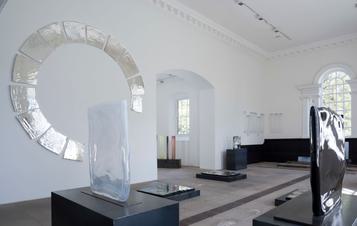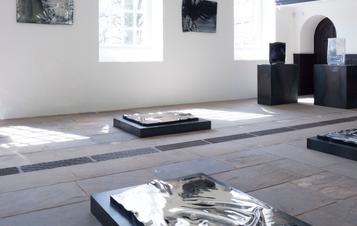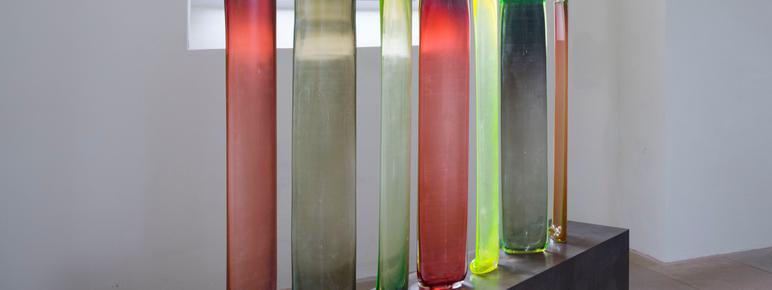
About Laura de Santillana and Alessandro Diaz de Santillana
‘The result is a show in which venue, artist and material come together in a rare alchemy’
Venice-based siblings Laura de Santillana and Alessandro Diaz de Santillana are internationally renowned artists and descendants of the Venini glassware dynasty, established by Paolo Venini on the island of Murano in 1921. Throughout summer 2015, they brought their elegant sculptural forms and colourful glass paintings to YSP’s 18th century chapel.
Laura de Santillana and Alessandro Diaz de Santillana have been creating impressive, innovative works of art in glass for decades. Separately, they have fine-tuned mutually shared experiences into different and distinctive visual languages. What they have in common is a shared passion for glass: the tradition, the craft and the endless possibilities of creating works from the magical and unpredictable qualities of this medium. The subtleties of texture and colour in their works are heightened in the contemplative spaces and diffuse, natural light of the Chapel.
Collapsing the typical blown cylinder, folding it in on itself, is a technique often employed by Laura de Santillana to produce slab-like forms that are, in a sense, envelopes forever sealed by the making process. The artist refers to them as ‘glass books’, and they retain a powerful sense of seeming to contain knowledge held in suspension. In the Chapel, the artist showed a library of these forms, to which she returns habitually, in specially made bookshelves.
Colour is fundamental to Laura’s work, from subtle, misty opaque white and blue forms through to her strikingly intense yellow uranium glass pieces made in the Czech Republic, which have the luminous quality of neon. Laura’s Blue Notebooks were inspired by Franz Kafka’s blue octavo notebooks – eight diaries used by the writer between 1917 and 1919; as well as being smaller in size than his usual quarto notebooks, they are more lyrical, comprising a collection of aphorisms and fragments. When light penetrates the glass books they appear to glow darkly with deep blues, merging into green towards the edge. Within each book powders and pigments added to the open form whilst still pliable create shadows.
Alessandro’s passion and inspiration is water, which translates to the incredible treatment of the surface in his works, many of which have a strong, painterly quality. The YSP exhibition includes a series of wall and floor works by the artist with a complex, dark black yet mirrored patina, recalling the sense of looking into deep, reflecting pools. Using a technique applied for centuries in the production of handmade windows, a blown cylinder of glass is heated and cut, falling flat under its own weight. At this point, when the glass is typically flattened completely to remove imperfections, Alessandro works with the surface to add folds and subtle undulations. The resulting pieces have an evasive, ephemeral and fluid quality, neither mirror nor image. Unlike Laura’s more solid pieces, Alessandro works with glass that is only millimetres thick.
The art of glass is alive and shimmering in this exhibition. The craft of glass is alive in it too. The living tradition of Venetian glassmaking is both celebrated and slightly set free in the Chapel in Yorkshire
- Crafts
Within the two artists’ approaches it is easy to draw out a familial conversation about the window as metaphor: while Alessandro holds and returns the gaze, Laura allows it in.
Peter Murray, YSP’s Founding and Executive Director, says:
“Alessandro Diaz deSantillana and Laura de Santillana are siblings who have been creating impressive works of art for decades. Separately, they have fine-tuned shared experiences into different and distinctive visual languages. What they have in common is a shared passion for glass: the tradition, the craft and the endless possibilities of creating works of art from the magical and unpredictable qualities of this medium.”
In association with Fondazione Giorgio Cini, Le Stanze del Vetro and Pentagram Stiftung, Venice.
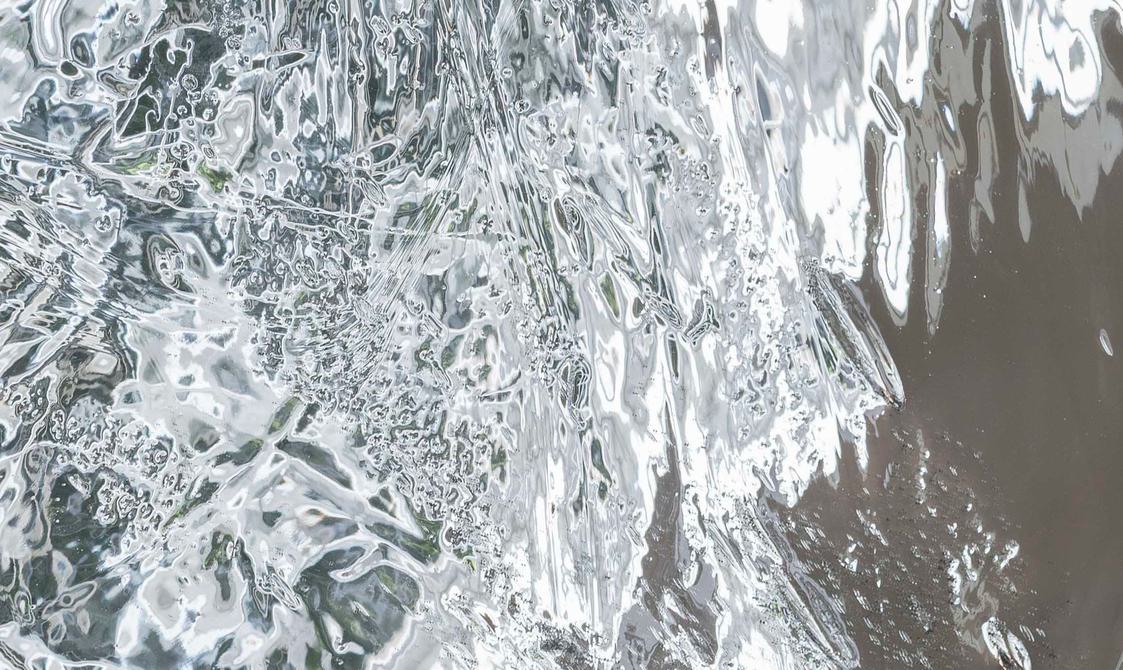
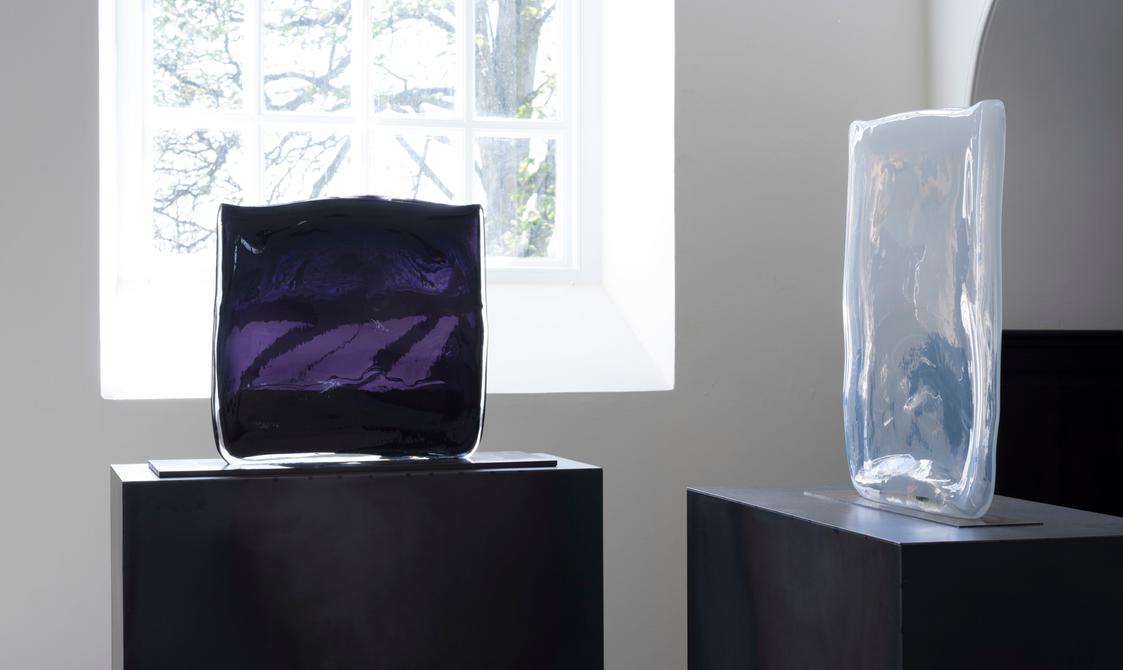
You might also like
More- News
YSP to partner with Leeds Creative Labs in 2026
2 December 2025 - Art Outdoors

David Nash: Black Mound
Black Mound was made for the YSP landscape by David Nash in 2013. Once in place, he charred the oak forms through a carefully controlled burning process that relates to his interest in the four elements. - Profile

Sue Stuart-Smith
- Event
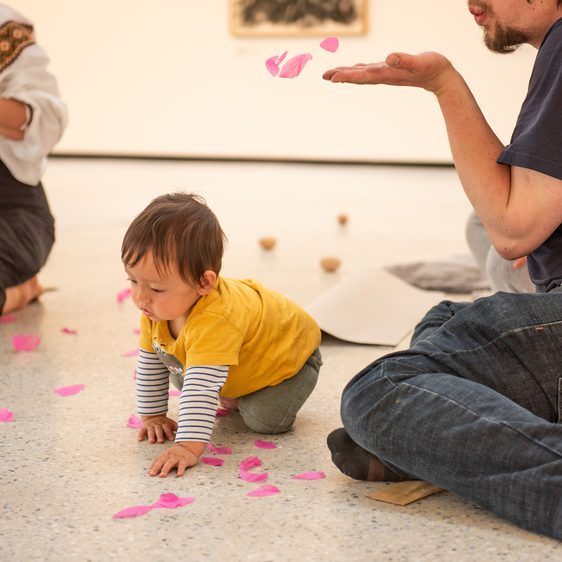
Sculpture Baby: Jordy Kerwick
–Spend creative time with your baby and enjoy this sensory session inspired by Jordy Kerwick's One to Give. One to Take Away exhibition at The Weston.
